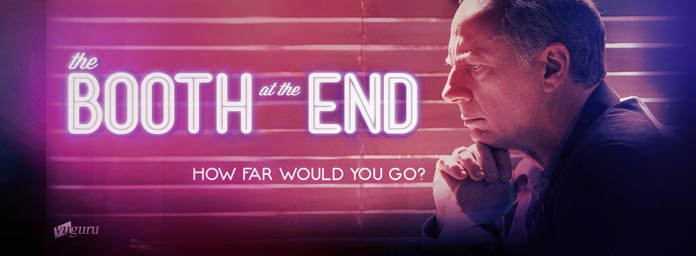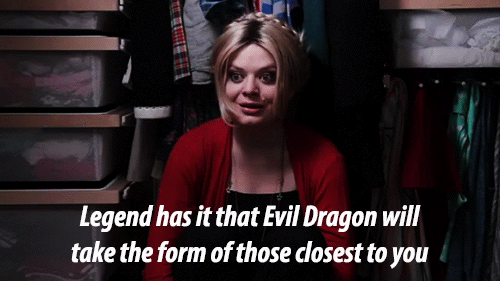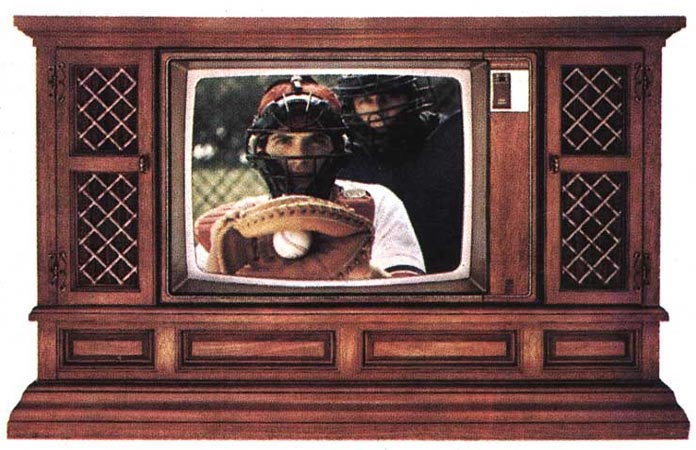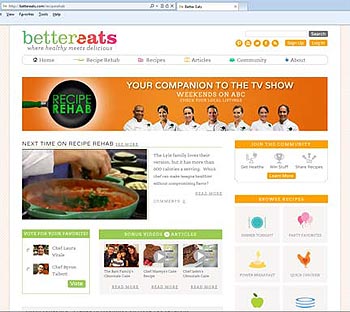TV Is Dead, Long Live TV: Why We Should Still Call It Television
Published on February 15th, 2013 in: Science and Technology, Streaming, The Internets, TV, TV Is Dead Long Live TV |
I think the moral lesson behind The Booth at the End is: Don’t over think things. It’s also worth noting that while neon signs still use tubes to convey messages, this is no longer true of modern TVs.
Two weeks ago I wrote a piece acknowledging Netflix as our new media overlords for the occasion of the premiere of House of Cards. The success of the first independent series produced by Netflix, along with the continued success enjoyed by web series and Hulu-produced content, has some scratching their heads about what to call this new viewing experience. I have an answer to this question: when enjoying The Booth at the End on Hulu or MyMusic on YouTube, one is watching television.
This search for another name for what we are doing while we enjoy Very Mary Kate or Husbands is pointless. That many consume this entertainment via a screen on what we now call a computer rather than on what we have traditionally called a television is immaterial.

No one is asking for a new term for GIF watching, but they totally should.
When I’m watching Elaine Carroll on any device and through any medium,
I call that laughing my ass off.
An etymologist may argue that the word television was invented to convey meaning around the process whereby moving images were transmitted over the air by broadcasters, and that therefore watching Recipe Rehab on YouTube is different from watching Recipe Rehab on ABC. This is just arguing about technicalities; most who view the show on ABC are receiving it through a cable or satellite service, not the airwaves as the word television originally implied. That the screen showing Recipe Rehab is connected to a cable box rather than to an Internet cable makes no difference, and indeed in many homes the Internet and linear television come in on the same line from the same provider.
The phrase we use in Digital Asset Management to describe a traditional network that shows content on a fixed schedule is linear television. We used to say appointment television, but then some networks began running parallel channels of content in slightly different time configurations, and then there was TiVo and other means of rescheduling those appointments. So it’s linear television—fixed, scheduled, network, Nielsen-rated visual entertainment made available to all Americans via digital signal or subscription—that we now refer to when we speak of the television circa 1995.

Even this tube television had a computer in it: See that little panel on the upper right? That panel responds to a remote control, allowing the primitive television watcher to switch between as many as six different viewing options! You’ve been using a computer to assist you in watching television for decades.
Others might argue that watching television is device dependent—that when one sees Annoying Orange on Nickelodeon, that’s watching TV, but when one engages with the Orange on its webpage, you’re doing something different. This is an argument that shows an ignorance of how images get on both devices.
The moment the first remote control shipped, a small computer was part of the television watching experience. Since then, computer components in television sets have grown to the point where computer parts completely replaced any hard-wired or even vaguely mechanical components. This is why televisions are so much lighter and shallower than they used to be, and televisions are no longer sold as part of large furniture pieces. Television repair stores used to be in small towns across America, but with the full computerization of the machine we call TV, television repair is mostly swapping out wires and cards and requires little, if any, specialized skills. There are no tubes, there are no dials, and increasingly there are no buttons. In fact, my only complaint regarding my excellent Sony television is lack of a damn ON button of any kind; god forbid you lose track of the remote.

There might be some fancy neologism for engaging with television
content on its webpage, and I’d love to hear that word. Instructional
shows are the clear winner in web content engagement, as recipes
and instructions are helpful things. I always wondered if anyone
actually learned how to repair things from watching
This Old House, because they had to skip so many steps
to show home renovation in half-hour PBS format.
Further, using both Recipe Rehab and Annoying Orange as modern examples, television has a rich history of bringing independently produced content into the mainstream via syndication. When linear television says no to ideas like Very Mary Kate or Husbands, these shows are no longer effectively canceled, but simply in a new kind of syndication, one very familiar to fandom. There is effectively no difference between seeking out Elaine Carroll’s hilarious slapstick on her webpage or YouTube and scanning the UHF dial to find Xena back in the day. So most people have to move from their “television with a computer inside of it” over to their “computer that plays television shows” to watch one show or another. This is a move across the room that won’t exist very soon. Your TV is already a computer and your computer is already a TV. The big traditional networks already have iPad apps that allow you to access some of their content, and that access will increase as the barriers of copyright, streaming technology, and device affordability rapidly evolve.
A long time ago, you couldn’t carry around music with you. Then there were transistor radios that let you put broadcast stations in your pocket! Then there were tape players! You know where this leads . . . anything you want to hear, wherever you like, whenever you like. The next ten years of television history are going to be full of change, but I’m very much enjoying watching the drama unfold. Because that’s what we do when we observe entertainment, we watch it . . . and I will never quit watching television.
Time limit is exhausted. Please reload the CAPTCHA.